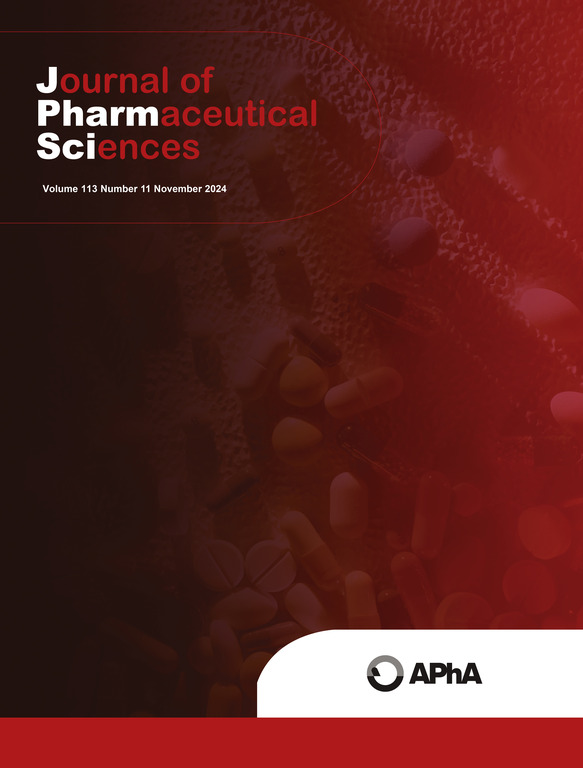Physicochemical compatibility investigation of ciprofol injection with eight cardiovascular drugs during simulated Y-site administration
IF 3.7
3区 医学
Q2 CHEMISTRY, MEDICINAL
引用次数: 0
Abstract
The intravenous pharmacotherapy in patients with critically ill and perioperative intravenous anesthesia is extremely challenging due to the large number of drugs administered. In-line incompatibility remains a significant safety concern. We therefore evaluated the physico- chemical compatibility of combinations of ciprofol injection with cardiovascular drugs during simulated Y-site administration frequently used in intensive care unit setting or intravenous anesthesia. Ciprofol injection was mixed with clinical concentrations of dopamine, sodium nitroprusside, dobutamine, phentolamine, papaverine, nitroglycerin, metaraminol and methoxamine solution at a 1:1 vol ratio under ambient conditions (25 ± 1 °C). Physicochemical compatibility changes in appearance, pH values, Zeta potential, particle size/polydispersity index (PDI), osmotic pressure, and relative percentage content are observed at predetermined time points (0, 2, 4, 6, and 8 h). During the 8-hour study period, the pH values change of all drug mixture remained within ±0.4. The relative drug concentration was maintained between 95 % and 105 %. The mean particle size was in the range of 200 to 220 nm, with a PDI below 0.2. Osmotic pressure changes were consistently <6 %. Notably, the Zeta potential of the metaraminol-ciprofol mixture exhibited a variation exceeding ±10 mV. Microscopic imaging analysis showed that the droplet sizes of dopamine-ciprofol, metaraminol-ciprofol, and papaverine-ciprofol mixtures, increased significantly. Based on this studies, ciprofol injection demonstrated compatibility and stability when administered via Y-site infusion with sodium nitroprusside, dobutamine, methoxamine, phentolamine, and nitroglycerin for up to 8 h at room temperature. However, the combination of ciprofol with dopamine, metaraminol, or papaverine was incompatibility during infusion. pH is a significant factor that could potentially influence the stability and compatibility of the combinations. Clinical strategies such as the use of inline filters and post-infusion irrigation tubes can prevent these risks.

环丙酚注射液与8种心血管药物模拟给药时的理化相容性研究。
危重病人和围手术期静脉麻醉患者的静脉药物治疗由于需要使用大量的药物而极具挑战性。内联不兼容性仍然是一个重要的安全问题。因此,我们评估了环丙酚注射液与心血管药物在重症监护病房或静脉麻醉中经常使用的模拟y部位给药时的物理化学相容性。环丙酚注射液与临床浓度的多巴胺、硝普钠、多巴酚丁胺、酚妥拉明、papaverine、硝化甘油、二甲氨醇、甲氧沙明溶液按1:1体积比混合,室温条件(25±1℃)。在预定的时间点(0,2,4,6和8小时)观察外观,pH值,Zeta电位,粒径/多分散性指数(PDI),渗透压和相对百分比含量的物理化学相容性变化。在8小时的研究期间,所有混合药的pH值变化保持在±0.4以内。药物相对浓度保持在95% ~ 105%之间。平均粒径在200 ~ 220 nm之间,PDI小于0.2。渗透压变化始终小于6%。值得注意的是,甲氨酚-环丙酚混合物的Zeta电位变化超过±10 mV。显微成像分析显示,多巴胺-环丙酚、甲氨酚-环丙酚和罂粟碱-环丙酚混合物的滴度明显增大。基于这项研究,环丙酚注射液在室温下通过y位点输注硝普钠、多巴酚丁胺、甲氧胺、酚妥拉明和硝化甘油长达8小时时显示出相容性和稳定性。然而,在输注过程中,环丙酚与多巴胺、甲氨醇或罂粟碱联合使用是不相容的。pH值是可能影响组合稳定性和相容性的重要因素。使用内联过滤器和输注后灌管等临床策略可以预防这些风险。
本文章由计算机程序翻译,如有差异,请以英文原文为准。
求助全文
约1分钟内获得全文
求助全文
来源期刊
CiteScore
7.30
自引率
13.20%
发文量
367
审稿时长
33 days
期刊介绍:
The Journal of Pharmaceutical Sciences will publish original research papers, original research notes, invited topical reviews (including Minireviews), and editorial commentary and news. The area of focus shall be concepts in basic pharmaceutical science and such topics as chemical processing of pharmaceuticals, including crystallization, lyophilization, chemical stability of drugs, pharmacokinetics, biopharmaceutics, pharmacodynamics, pro-drug developments, metabolic disposition of bioactive agents, dosage form design, protein-peptide chemistry and biotechnology specifically as these relate to pharmaceutical technology, and targeted drug delivery.

 求助内容:
求助内容: 应助结果提醒方式:
应助结果提醒方式:


